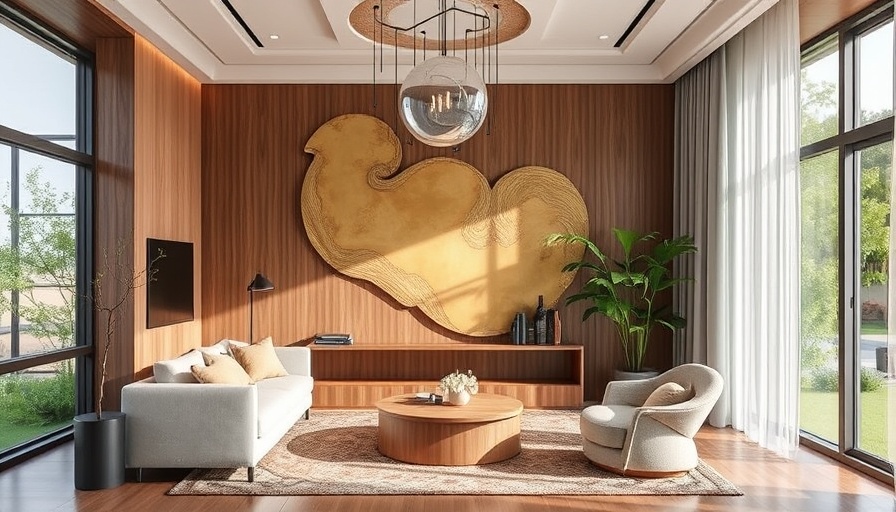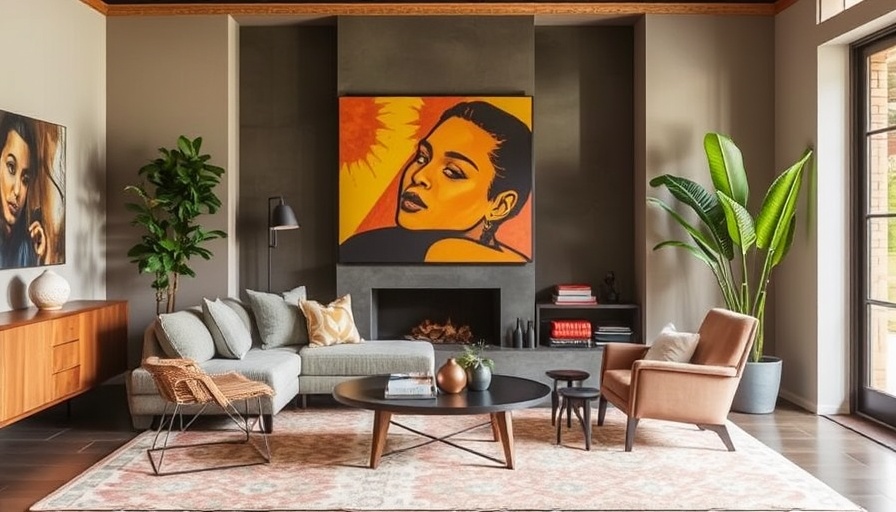
Exploring Textural Contrast in Your Home
Textural contrast is a powerful tool in interior design, allowing homeowners to create depth and interest in their spaces. In the diverse climate and lifestyle of the Hampton Roads area, thoughtful use of texture can make a significant difference in how a room feels and serves its purpose. From the smooth surfaces of Scandinavian minimalism to the warm layers of Bohemian styles, the right textures enhance comfort and style.
Why Textural Variety Matters
For families residing in the bustling cities of Hampton Roads, finding the right balance of textures can transform a house into a welcoming home. The military community often experiences frequent relocations, making it crucial to create a personal haven that feels uniquely yours. Employing a range of textures—such as blending sleek leather with soft fabric or rough stone with smooth wood—can help in making a space feel intimate and approachable, an essential aspect for family-oriented living.
Incorporating Textures in Different Rooms
Whether you’re redesigning your living room or redesigning your kitchen, the method remains similar: select textures that complement one another while showcasing individuality.
Living Room Interior Design: An eclectic mix of textures can breathe life into your living area. Picture a cozy fabric sofa mixed with a leather armchair, accompanied by wooden tables and soft, handwoven rugs. This combination can create a warm gathering space for family and friends.
Kitchen Interior Design: In the kitchen, contrasting textures can enhance functionality while providing visual appeal. Shiny metal appliances paired with rustic wooden cabinets can create a stunning focal point, while carefully chosen backsplashes of colorful tiles can add delight to routine activities.
Future Trends in Texture Usage
As homeowners seek unique approaches to design, the future of interior will likely see an increasing interest in tactile experiences. Consider a contemporary dining room that combines textures like plush velvet chairs and a sleek marble table top for an upscale aesthetic. The push for eco-friendly materials will likely bring back natural textures like stone, bamboo, and jute, emphasizing sustainability without sacrificing design.
Practical Tips for Mixing Textures
- Start with a Neutral Base: Choose neutral colors for larger pieces and add texture through accessories.
- Layer Textures: Use rugs, pillows, and throws to create depth in your space.
- Balance is Key: Ensure that no single texture overpowers the others. Aim for equilibrium in your design.
Your Local Inspiration
Exploring local design stores or workshops in the greater Hampton Roads area can also help you understand texture variety. Connect with local interior design professionals who can provide insights on how to apply these principles in your home. The right designer can help you navigate the vast world of textures to create an interior that speaks to your personal style.
In conclusion, understanding and effectively applying textural contrast can elevate your interior design game, making your space not just visually appealing but also comfortable and inviting. Invest in your home’s aesthetic by playing with textures and layering them creatively.
For those looking to elevate their interior design experience, don’t hesitate to explore local design services and professionals who can provide personalized guidance.



Write A Comment